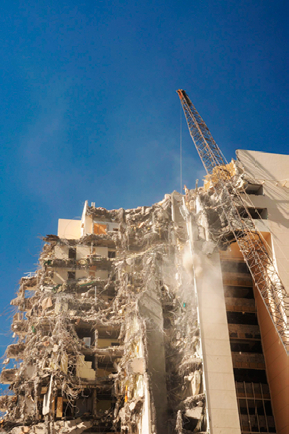

| Topic: Demolition Projects: Changing Workplaces with Changing Hazards | |
| Date Issued: February 21, 2012 | Date Revised: |
Demolition project sites are constantly changing and, as a result, so do the hazards. Workplaces that change from hour to hour present a challenge for employers and employees alike. Proper job planning and hazard assessment can prevent injuries.
Examples of demolition hazards include:
